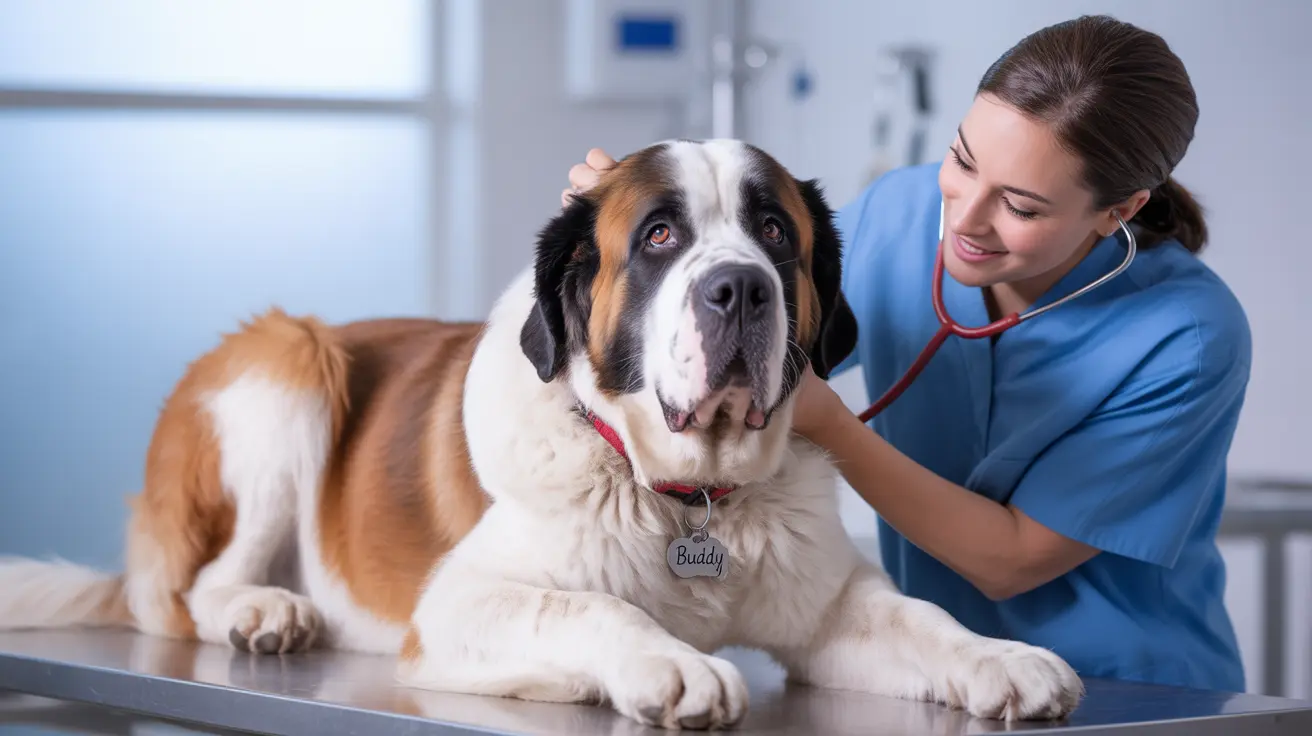Saint Bernards, known for their gentle giant status and heroic history as rescue dogs, face several significant health challenges throughout their lives. As a breed particularly susceptible to various medical conditions, understanding these health issues is crucial for current and prospective Saint Bernard owners to ensure their beloved pets receive proper care and attention.
In this comprehensive guide, we'll explore the most common health concerns affecting Saint Bernards, discuss prevention strategies, and outline treatment options to help these magnificent dogs live their best lives.
Major Orthopedic Concerns
Hip and Elbow Dysplasia
Hip dysplasia affects nearly half of all Saint Bernards, with studies showing approximately 47.4% of evaluated dogs displaying this condition. This hereditary condition occurs when the hip joint doesn't develop properly, leading to deterioration over time.
Similarly, elbow dysplasia frequently appears in Saint Bernards, causing joint malformation and potential lameness. Both conditions typically manifest through:
- Difficulty rising from a lying position
- Reluctance to exercise or climb stairs
- Visible limping or favoring certain legs
- Decreased activity levels
- Signs of pain during movement
Other Skeletal Issues
Saint Bernards may also develop conditions like Wobbler Syndrome and osteochondrosis, particularly during their rapid growth phase. Panosteitis, often called "growing pains," commonly affects young Saint Bernards, causing temporary but shifting lameness between legs.
Cardiac and Respiratory Health
Heart conditions pose significant risks for Saint Bernards, with dilated cardiomyopathy being particularly concerning. Regular veterinary screenings can detect early signs of cardiac issues, including:
- Heart murmurs
- Irregular heartbeat
- Exercise intolerance
- Coughing, especially at night
- Respiratory distress
Life-Threatening Conditions
Gastric Dilatation-Volvulus (Bloat)
GDV, or bloat, represents a severe emergency requiring immediate medical attention. This condition occurs when the stomach fills with gas and twists, cutting off blood supply. Prevention strategies include:
- Feeding smaller, more frequent meals
- Using slow-feed bowls
- Avoiding exercise immediately after meals
- Maintaining regular feeding schedules
Cancer Risks
Saint Bernards show higher susceptibility to certain cancers, particularly osteosarcoma and lymphoma. Early detection through regular checkups significantly improves treatment outcomes.
Managing Weight and Growth
Proper weight management proves crucial for Saint Bernards, as excess weight can exacerbate joint problems and strain the heart. Controlled growth during puppyhood helps prevent developmental issues and reduces the risk of orthopedic problems later in life.
Preventive Care and Regular Monitoring
A proactive approach to health care can significantly impact a Saint Bernard's quality of life. Essential preventive measures include:
- Regular veterinary check-ups
- Genetic health screening
- Appropriate exercise routines
- Proper nutrition and weight management
- Joint supplementation when recommended
Frequently Asked Questions
What are the common health issues that Saint Bernards face as they age?
Saint Bernards commonly develop hip dysplasia, heart problems, and arthritis as they age. Regular veterinary check-ups can help monitor and manage these conditions effectively.
How can I recognize the signs of hip dysplasia and elbow dysplasia in my Saint Bernard?
Watch for difficulty rising, reluctance to exercise, limping, and signs of pain during movement. Early symptoms often include decreased activity levels and changes in gait.
What treatment options are available for managing hip dysplasia in Saint Bernards?
Treatment options include weight management, joint supplements, anti-inflammatory medications, physical therapy, and in severe cases, surgical intervention such as total hip replacement.
How can Saint Bernard owners prevent or reduce the risk of serious health problems like bloat or cardiac disease?
Prevent bloat by feeding smaller meals, using slow-feed bowls, and avoiding exercise after meals. For cardiac health, maintain regular vet check-ups, ensure proper exercise, and maintain healthy weight.
When should I schedule health screenings to detect genetic disorders in my Saint Bernard?
Begin health screenings during puppyhood, with hip and elbow evaluations typically starting around 24 months. Regular cardiac and eye examinations should occur throughout their lives, with frequency determined by your veterinarian.
Understanding and preparing for these health challenges helps ensure better outcomes for Saint Bernards. While these gentle giants may face various medical concerns, proper care and vigilance can help them live fuller, healthier lives.






